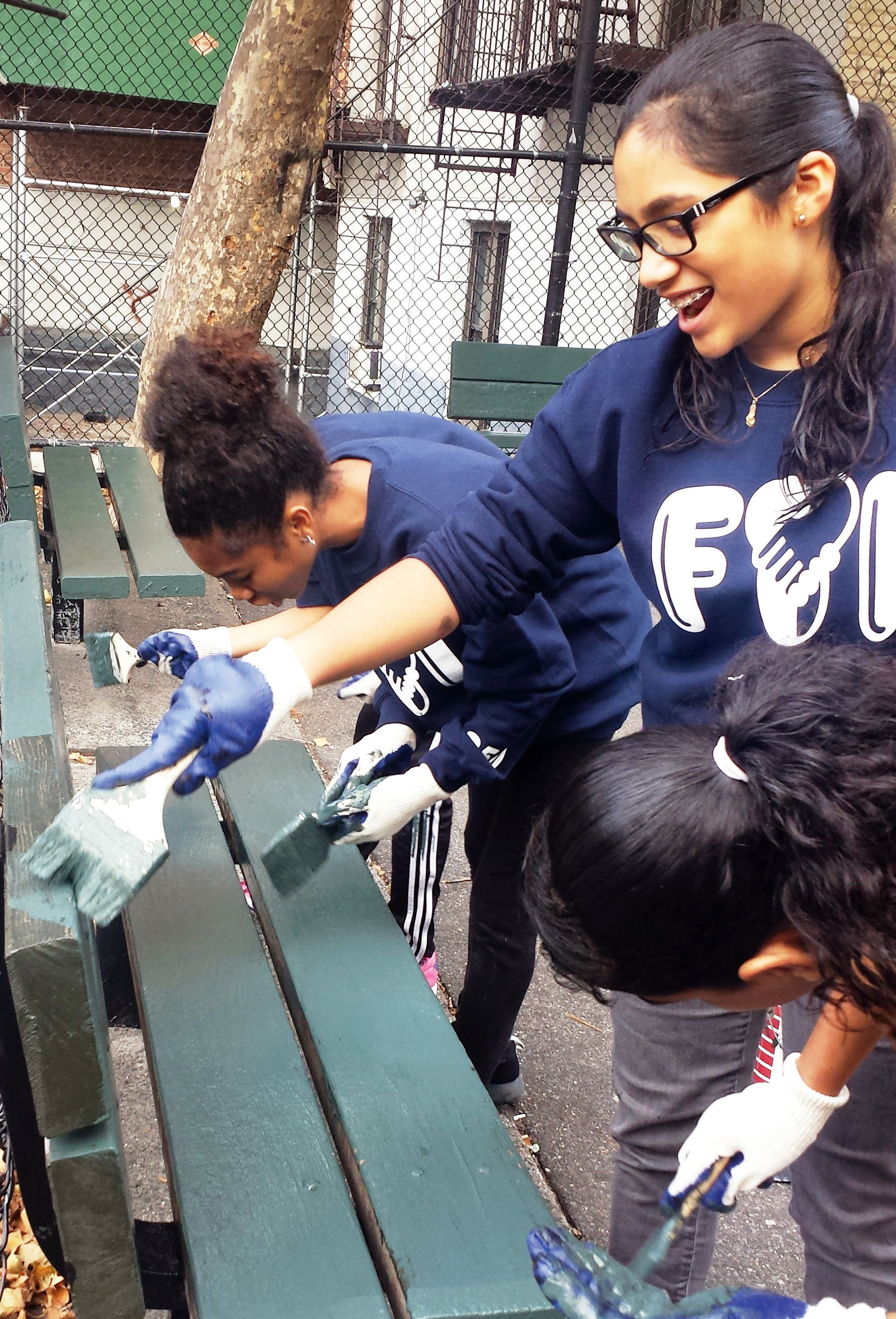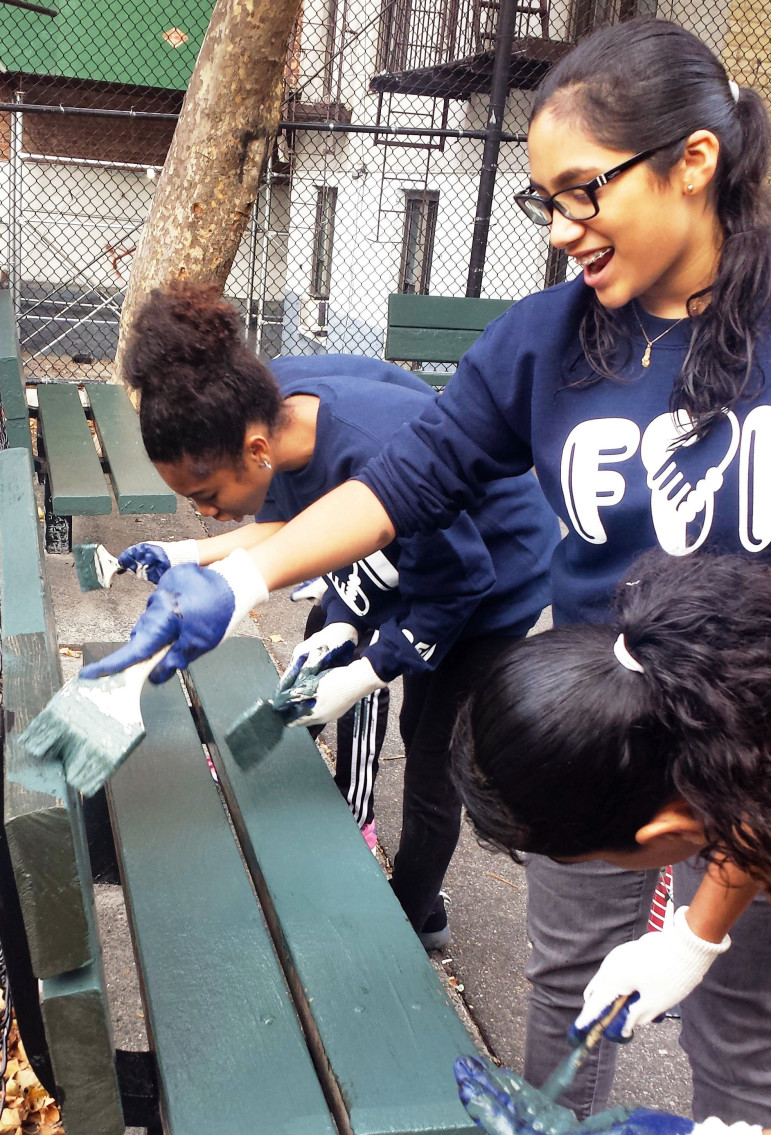
Photo courtesy of Fresh Youth Initiatives
On a weekday when schools were closed, teens of the New York City Fresh Youth Initiatives after-school program volunteered to clean up a local playground, where the program’s K-5 students also play every day.
High school students stand in a Chicago glassblowing studio. They’re wearing goggles and working with fire, creating their own designs out of molten glass. The finished products will be sold in the gift shop of After School Matters, the city’s large after-school program.
In the Washington Heights area of New York City, middle school kids pound away in a drum circle at the after-school Fresh Youth Initiatives. The kids are making noise and getting into the rhythm. On another day, some of them may tutor or coach younger kids in a sport. Or they may design clothes for a fashion show.
Both programs, After School Matters and Fresh Youth Initiatives, are effective in engaging adolescents, who generally participate in after-school programs far less than younger kids do. Teenagers are freer to choose what they do in the afternoons, and may have jobs and family responsibilities — or just want to socialize with friends.
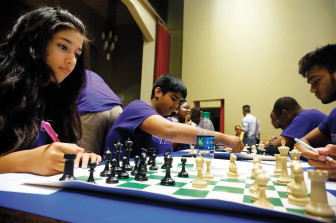
Photo courtesy of After School Matters
The Chess Champs program helps teens become familiar with the fundamentals of chess through an interactive and creative approach, by building strategies and tactics that not only enhance chess-playing abilities but also deliver critical 21st-century skills like teamwork, leadership and problem-solving.
But according to an Afterschool Alliance issue brief, “Afterschool: Key to Health and Wellness for Preteens and Teens,” adolescents who participate in out-ofschool- time programming improve their health and well-being, in addition to academic achievement.
So, how do After School Matters and Fresh Youth Initiatives draw kids? What makes for effective engagement?
One important factor is to give teens the chance to be leaders, said Priscilla Little, initiative manager at The Wallace Foundation.
Several years ago when Little worked at the Harvard Family Research Project she and colleagues looked at 250 after-school providers that had high retention rates for middle school and high school students. The providers were spread across six cities — but the high-retention programs shared three program features.
“Programs were offering a lot of leadership opportunities,” said Little. Teenagers want autonomy and choice, she continued. Effective programs provided volunteer opportunities for the teens, or community service activities. Or they let teens design and lead activities. Many had youth councils. Sometimes youth had paid staff positions or could serve in other official roles.
The second factor found in highretention programs was that “the staff were really keeping informed about what was happening” in the lives of the kids, she said.
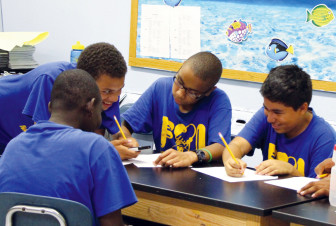
Photo courtesy of Fresh Youth Initiatives
The after-school program at Fresh Youth Initiatives engages students in grades K-12, most of whom are? hands-on learning and service activities.
A third feature linked to high retention was that “the staff held meetings at least twice a month to talk about programming,” she said.
Programs with high retention rates also tended to be community-based and have more than 100 participants, according to the research report “Engaging Older Youth: Program and City-Level Strategies to Support Sustained Participation in Outof- School Time.”
Playing with fire
Tracy Kirchmann is the educational programs manager at Ignition Community Glass, one of the studios connected with After School Matters. She previously taught glass-blowing in a high school.
“I couldn’t believe the level of engagement,” she said.
A lot of the kids were barely involved in school, Kirchmann said. Some had learning disabilities. Many had “kind of checked out of life,” she said.
But they loved playing with fire.
Teenagers are “all about testing boundaries,” Kirchmann said, and they liked the danger of the activity.
But the work also required close attention. “Glass-blowing just requires so much of your focus,” she said.
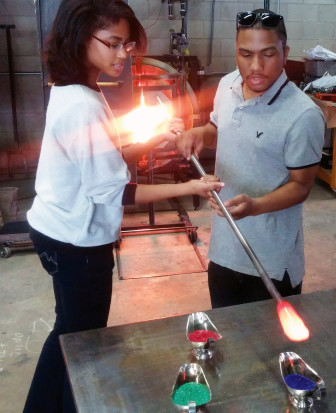
Ignition Community Glass
At the Ignition Glass Studios, teens do glassblowing apprenticeships through the Chicago program After School Matters.
The teens were drawn by the opportunity to test themselves. They stay with the Ignition program, Kirchmann said, because of the relationships they have in the studio, both with the other kids and the artists there.
When Kirchmann asked them to write about why they participate, Taquita Pendleton, 16, explained: “I want to know more about glass-blowing and also be part of this community.”
Emelio Vasquez, 15, wrote: “It gives me an outlet.”
During the course of a school year, the staff come to know the kids well, helping them with all kinds of things — including filling out financial forms for college.
For the kids, the program “opens up the opportunity to be surprised in a good way,” Kirchmann said. They see that life can offer new and wonderful things.
Apprenticeships fit the bill
Ignition is one of about 250 community-based organizations that provide apprentice-type opportunities in Chicago through After School Matters. The program also employs independent instructors. After School Matters serves 15,000 mostly low-income high school students in after-school and summer programs
“After School Matters is one of the exemplars,” Little said. “They address all the features we talked about [in the Engaging Older Youth report].”
After School Matters CEO Mary Ellen Caron points out that the program uses professionals and craftspeople as instructors.
“Teens get to see actual experts in their field,” Caron said. That’s one of the things that attracts them, she said.
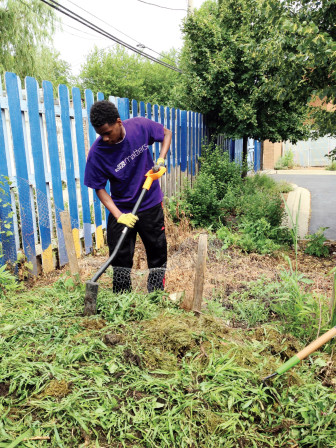
Photos courtesy of After School Matters
A community gardening program creates opportunities for youth to participate actively in and explore careers in agriculture.
“It’s valid and real work,” she said. “They have independence and interdependence. They learn to work as a group and also learn they need each other.”
In addition, “They have voice and they have choice,” Caron said. “That’s really important. [The teenagers] tell us that over and over. Their opinions are respected and asked for.”
Teens get a small stipend that helps them pay for transportation to their program and for food. Since most of the students’ families have low incomes, the money helps the family also, Caron said.
The apprenticeship model meets the developmental needs of high school students, according to Robert Halpern, professor at the Erikson Institute for Graduate Study in Child Development in Chicago.
“Youth are working in a sustained and gradually deepening way on tasks or projects in a specific discipline field of work or service under the tutelage of and sometimes alongside of an adult skilled in that discipline,” he said in a 2010 presentation at the University of Minnesota Extension Center for Youth Development.
Not only do they gain the skills of that field but they are also taking on the identity of someone who works in that field, Halpern said.
But what about younger adolescents?
High-retention programs for middle schoolers and high schoolers share the same three features, but the approach must be different.
It’s important to look at the developmental differences among young and older adolescents, Little said.
“Middle schoolers need a tight container,” she said. They need boundaries. High school students, on the other hand, are seeking the chance to expand.
Middle school kids are all about relationships, she said. The best ambassadors for middle school programs are the kids themselves.
But all middle schoolers are not the same. Eighth-graders are in a different developmental space, she said. For one thing, it’s a critical moment for keeping them engaged in school.
“Anything you can do to support the eighth-grade transition to high school” is important, Little said, whether it’s as simple as introducing an eighth-grade athlete to the high school coach.
Eileen Lyons is executive director of Fresh Youth Initiatives, which serves 220 middle school students from two sites in New York City, as well as elementaryschool kids.
Middle school youth should be offered every opportunity to try new things, she said. Kids of this age are “developmentally compelled to move out into the world,” she said, and their first step is to join up with a peer group. However, they have limited experience for the tasks in front of them, she said.
“They’re really on a tightrope,” she said.
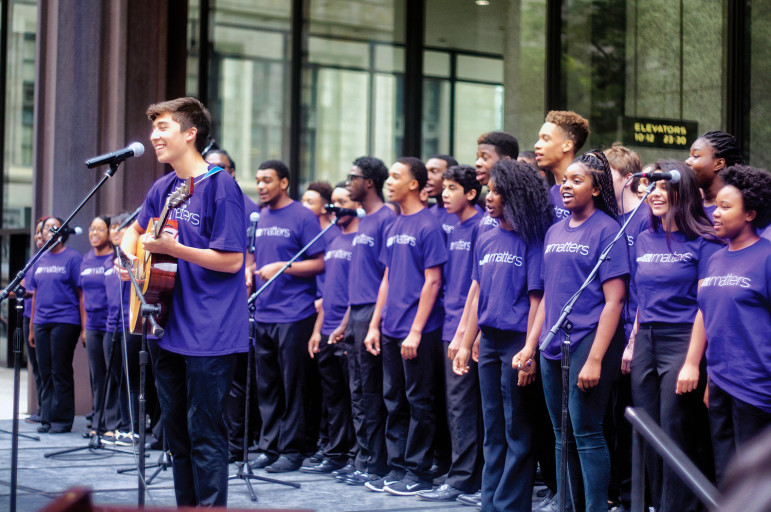
After School Matters Vocal Arts Ensemble performs music from various genres, helping teens perfect the techniques of professional performance skills. Teens participate in master classes, one-on-one vocal sessions, and training in music pedagogy with theatrical and dance movements emphasized as part of the musical training.
On one hand, they’re yearning to test themselves, but they still need reassurance, support and safety, Lyons said.
“They don’t even know what they want yet,” she said. They are high energy, they have a hard time focusing and they are all over the place.
“The focus is not there. That’s why they need support,” she said.
Balance is key to engaging middle school youth and to keeping them engaged. Staff must offer experiences, adventures and independence, but balance that with structure, guidance, safety and support, she said.
“You have to be very inventive,” she said.
“Kids will play off the passion the staff brings to the table,” she said.
They also really like to stay in their peer groups and resist being separated from their friends. That’s safety for them, she said.
A very popular activity among the middle school kids at Fresh Youth Initiatives is called Taste of New York. Kids go on field trips to discover the city, eating dumplings in Chinatown and baklava in Queens.
Kids this age will tease each other a great deal, but they are also moved by the needs of others.
“Our kids love doing service learning,” she said. They regularly tutor, mentor and coach sports with younger kids.
Program quality crucial
As after-school providers seek to deepen teens’ and tweens’ engagement, Little advises them to focus on program quality.
“Look at the program quality practices you have in place,” she said. “Take the time to invest in good program quality.”
Little recommends using quality development and assessment tools, such as those from the Weikart Center for Youth Program Quality or from the National Institute on Out-of-School Time.
“Don’t take program quality for granted,” she said. YT


